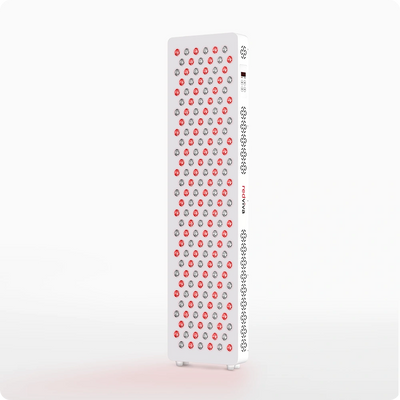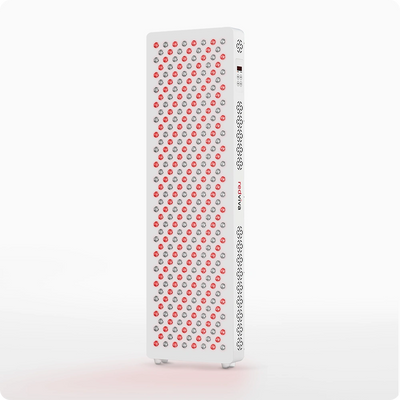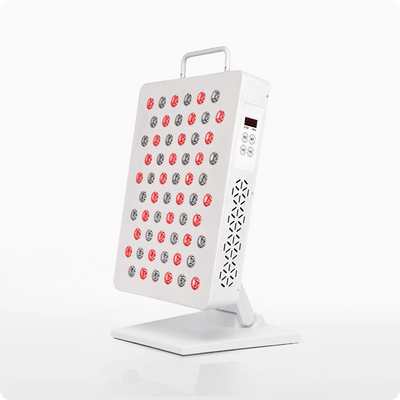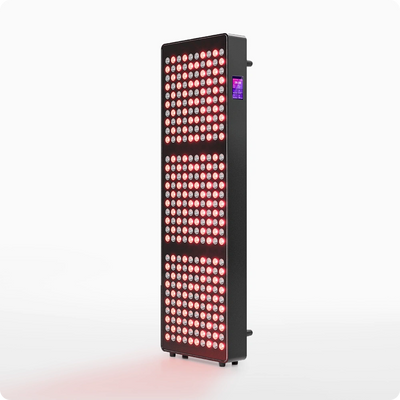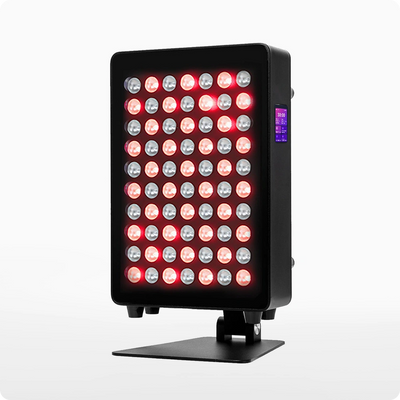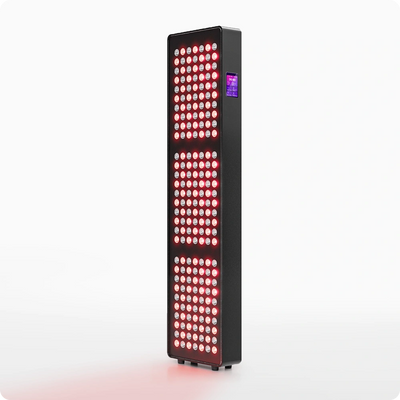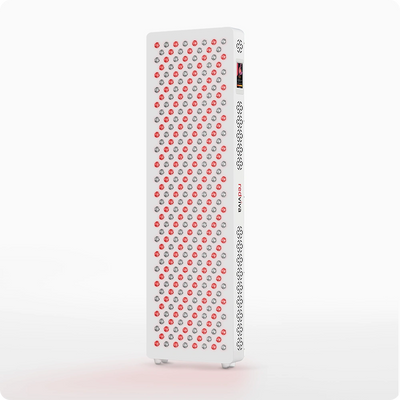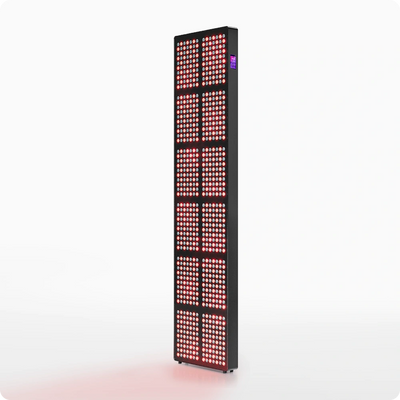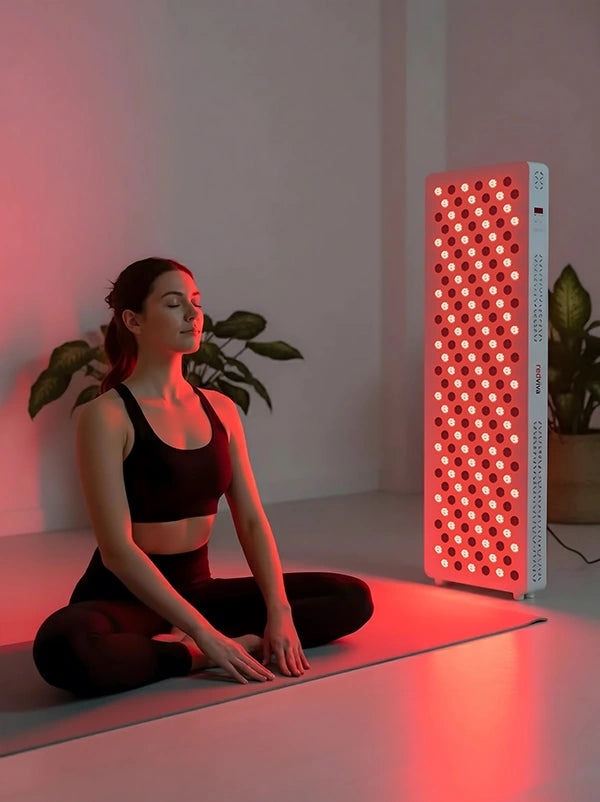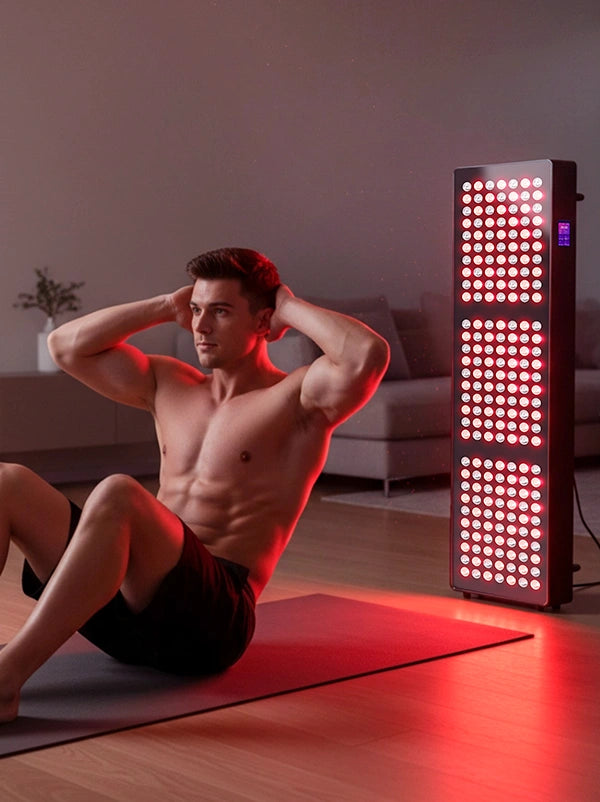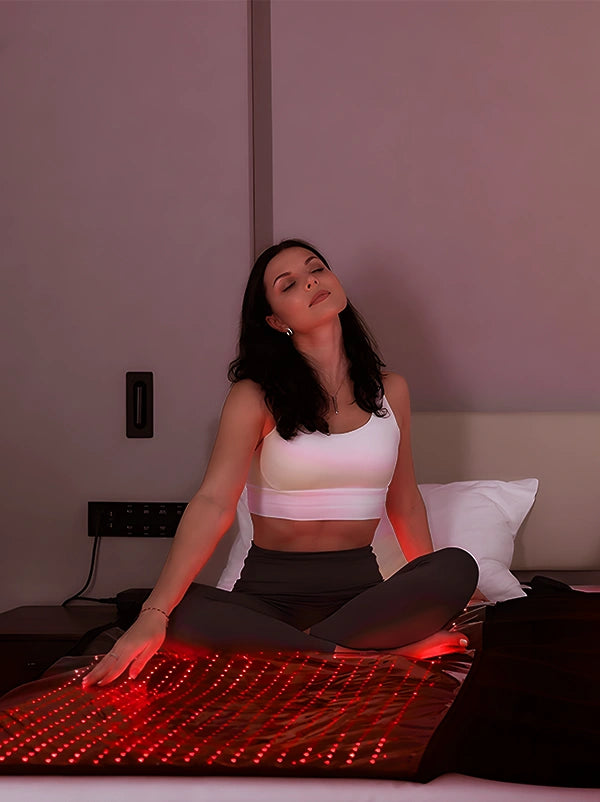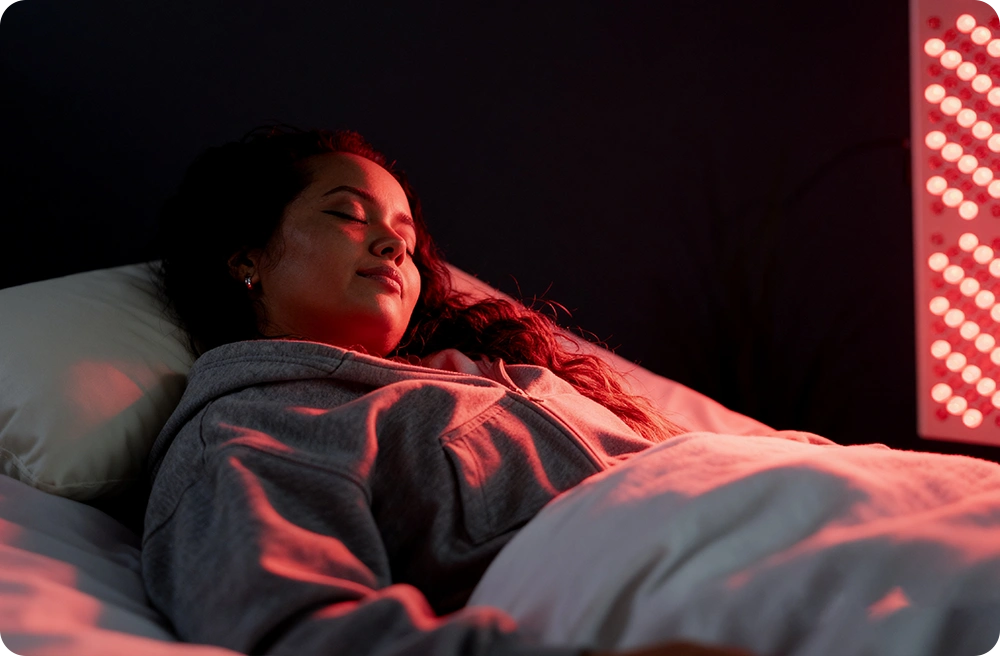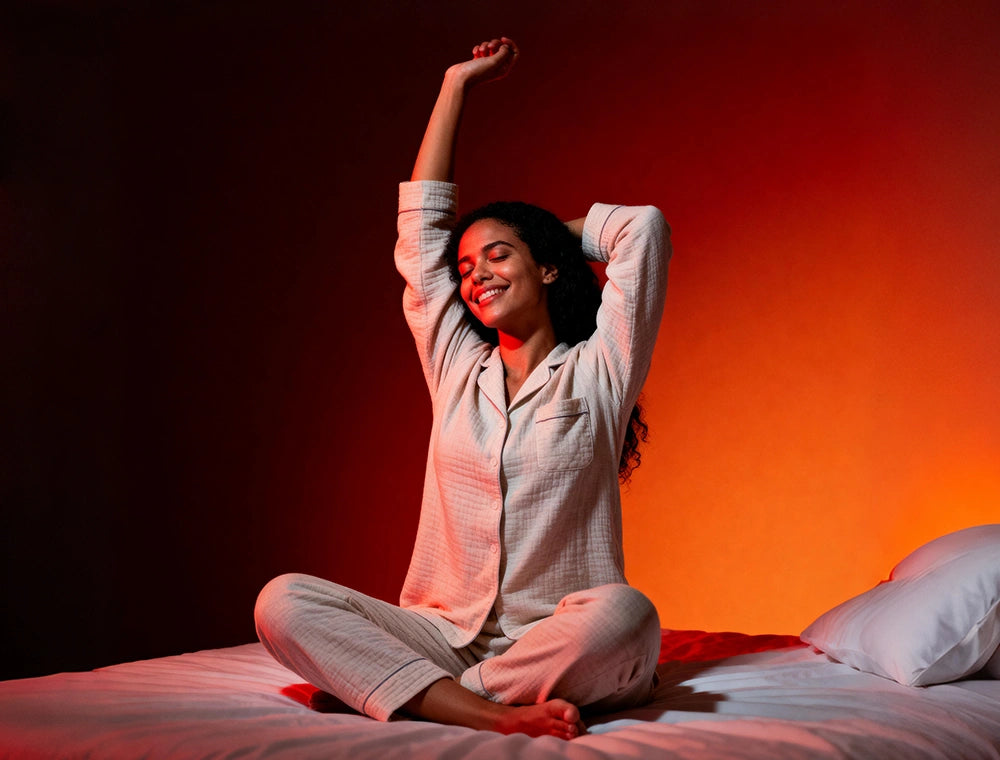
Experience Deep, Restorative Sleep With Red Light Therapy...
Sleep struggles aren't just inconvenient—they're detrimental to your overall health and quality of life. Research shows our specific red and near-infrared wavelengths can increase melatonin production by up to 70% while regulating your natural sleep-wake cycle for better sleep quality.
Why Redviva is recommended by Sleep Specialists:
✅ Addresses sleep issues without medication dependency
✅ Supports natural sleep hormone production and regulation
✅ Enhances sleep quality metrics and recovery processes
Reclaim Restful Nights

Our specific red and near-infrared wavelengths work directly with your body's internal clock, recalibrating disrupted sleep-wake cycles that occur due to modern lifestyles, shift work, or jet lag. This restoration of your natural circadian rhythm helps you fall asleep more easily at bedtime and wake feeling naturally refreshed, creating a sustainable sleep pattern that aligns with your body's innate timing.

Exposure to our precisely calibrated 660nm red wavelengths increases natural melatonin synthesis by up to or 35% without the grogginess or dependency associated with supplements. This natural hormone is essential for initiating sleep onset and maintaining sleep depth throughout the night, helping you achieve the deep, restorative sleep phases critical for physical and mental recovery.

Regular red light therapy sessions help normalise elevated night time cortisol levels that often prevent deep sleep. This hormonal balancing effect creates fewer middle-of-the-night awakenings and longer continuous sleep periods, addressing one of the most common causes of poor sleep quality that conventional sleep aids fail to resolve.
How Redviva Red Light
Therapy Transforms
Sleep Quality
Influences Your Body's Light Receptors
Unlike sleep medications that force chemical changes in your brain, Redviva red light therapy naturally signals your body's photoreceptors that regulate your sleep-wake cycle.
The specific 660nm red and 830nm near-infrared wavelengths emitted by our panels are precisely calibrated to communicate with these light-sensitive cells that govern your internal clock.
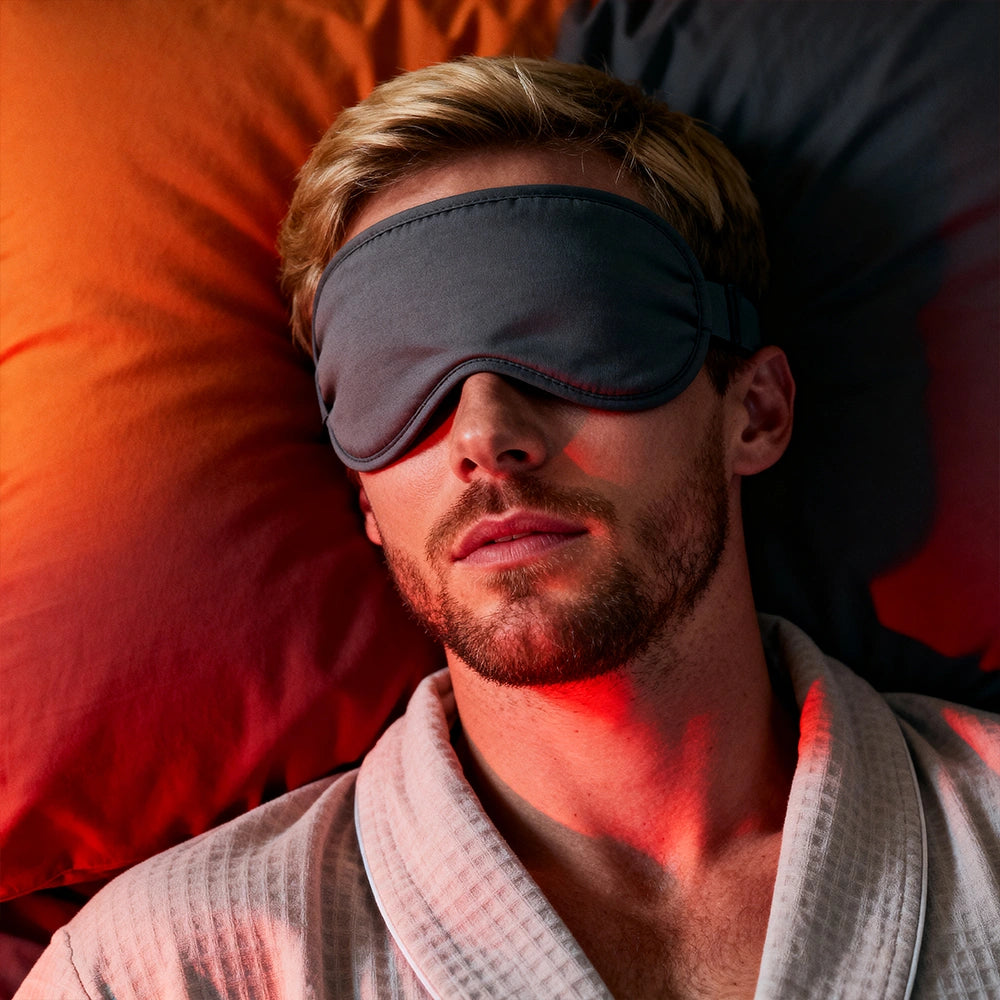
Unlike sleep medications that force chemical changes in your brain, Redviva red light therapy naturally signals your body's photoreceptors that regulate your sleep-wake cycle.
The specific 660nm red and 830nm near-infrared wavelengths emitted by our panels are precisely calibrated to communicate with these light-sensitive cells that govern your internal clock.

Balances Sleep Hormone Production
When therapeutic light wavelengths interact with your photoreceptors, they trigger the pineal gland's natural melatonin release while simultaneously suppressing cortisol (the stress hormone that keeps you alert).
This dual action creates the ideal hormonal environment for sleep onset and maintenance without the side effects or dependency of sleep medications.
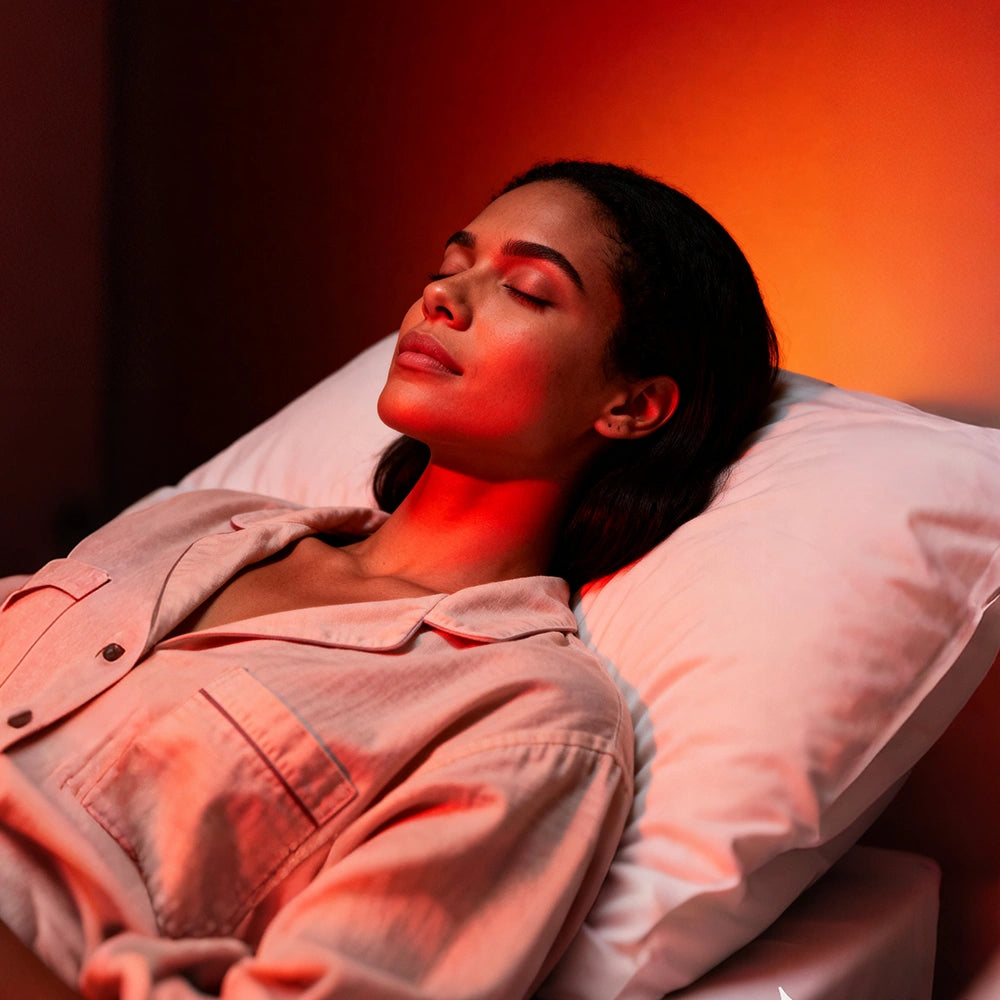
Optimises Evening Transition
Red light therapy helps your body distinguish between daytime alertness and nighttime rest by filtering out sleep-disrupting blue light frequencies while providing beneficial red wavelengths.
This creates a natural transition period where your body can properly prepare for sleep, allowing your nervous system to shift from "fight-or-flight" to "rest-and-digest" mode.
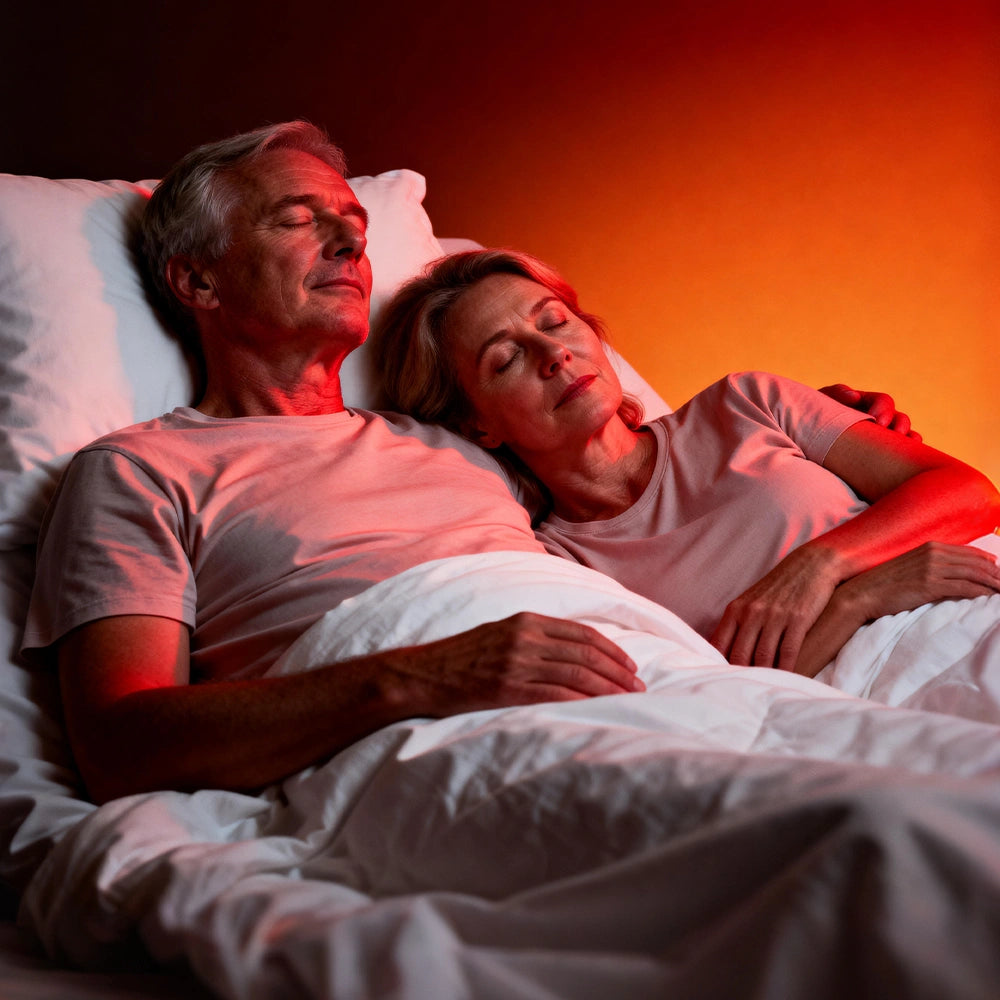
Builds Cumulative Sleep Improvements
Unlike temporary sleep aids that lose effectiveness over time, red light therapy enhances your body's own sleep regulation systems.
Regular sessions establish more robust circadian rhythms and hormonal patterns, creating progressive improvements in sleep quality that continue to strengthen with consistent use.
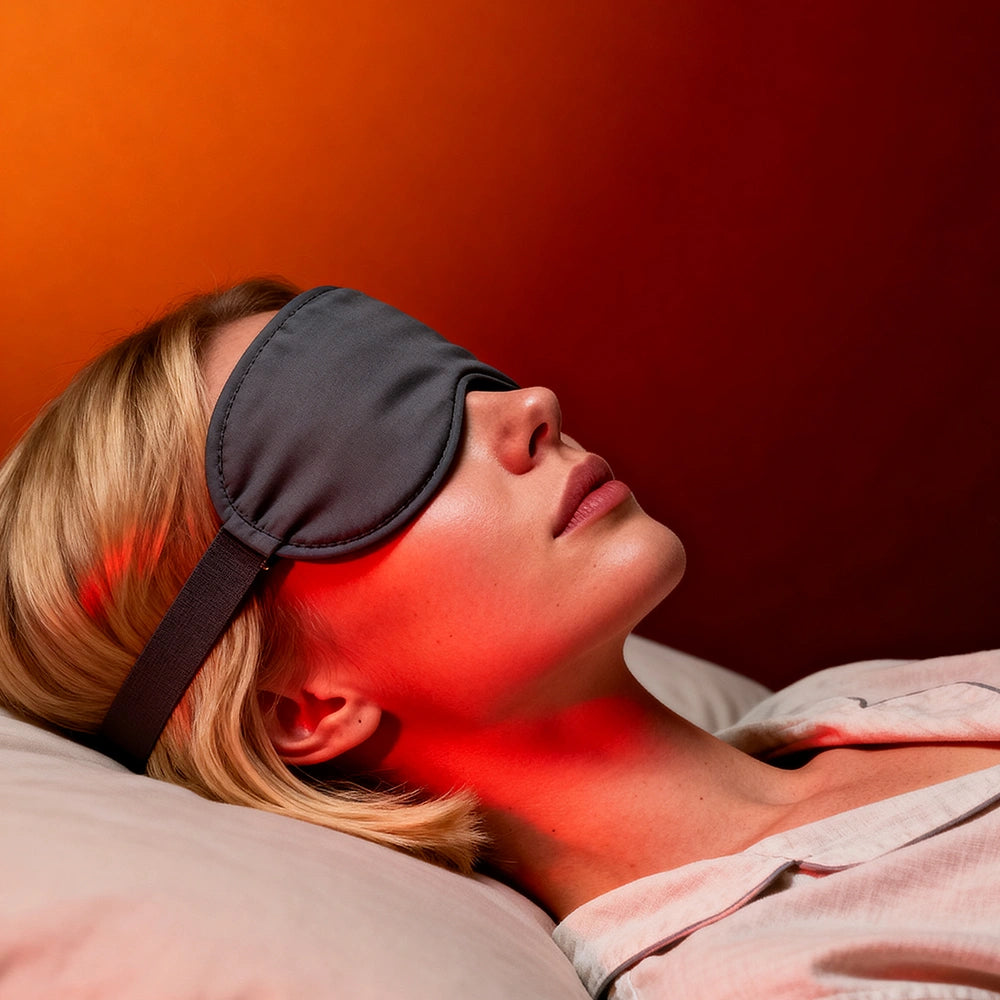




What else does the science say?
The sleep-enhancing properties of red light therapy have been increasingly validated through sleep science research. Clinical studies show these specific wavelengths help regulate circadian rhythm, enhance melatonin production, and modulate cortisol levels that affect sleep quality. Researchers have documented improvements in sleep onset, duration, and deep sleep phases following consistent evening use. This growing evidence explains why sleep specialists increasingly recommend professional-grade red light therapy as a natural approach to addressing sleep disruptions without the side effects associated with medications.
Clinical Study: Red Light Therapy Significantly lmproves Athlete Sleep Quality and Melatonin Levels
In a 14-day clinical trial, Zhao et al. (2012) exposed elite female basketball players to whole-body red light sessions (~658 nm) for 30 minutes each night. The results were striking – the red-light group showed much better sleep quality (lower Pittsburgh Sleep Quality Index scores) at post-test, whereas the placebo group (no light) saw virtually no improvement. Independent measures confirmed that sleep improved only in the red-light group, accompanied by a healthy rise in their nighttime melatonin levels (the sleep hormone) that correlated with better sleep. Meanwhile, the control group experienced no significant change in sleep or melatonin. This demonstrates how the Redviva red wavelengths can non invasively boost sleep quality – offering nearly three times greater improvement in sleep indices than no treatment in just two weeks.
Clinical Study: 630 nm Laser Acupuncture Shortens Time to Sleep and Reduces Night Waking
A randomized controlled trial by Chen et al. (2019) treated chronic insomnia patients with low-level 655–660 nm laser therapy on acupuncture points. Only the laser-treated patients (Group A) enjoyed dramatic sleep benefits: they fell asleep faster, woke up fewer times during the night, and achieved higher sleep efficiency, whereas sham-treated controls saw no such gains. In fact, the laser group’s sleep latency dropped and their sleep duration rose to healthy levels, with zero medication – a drug-free therapy. By the end of the 5-week treatment, insomnia sufferers had regained restful sleep patterns that weren’t present in the control group. These results highlight how Redviva-range red light can act as a powerful, non-pharmacological insomnia remedy, helping patients fall asleep quicker and stay asleep longer – improvements unattainable with placebo.
Clinical Study: Bedtime Red/NIR Device Boosts Sleep Quality and Next-Day Function vs Sham
A 2023 sham-controlled trial by Kennedy et al. tested a wearable combo red/near-infrared collar (660 nm, 810 nm, etc.) on adults with sleep complaints. Participants who used the active Solis-range light device every other night for 3 weeks reported far better sleep and relaxation than those using a sham device. Objective actigraphy showed similar total sleep, but subjectively the red/NIR group felt more refreshed and had improved mood and energy each day, while the placebo group did not. Notably, the light-therapy users saw a 17.5-point increase in relaxation and daytime function, compared to an 18.7-point drop in performance among sham users. Both groups had slight insomnia score improvements, but only the red/NIR group experienced these meaningful boosts in sleep quality and next-day alertness. This placebo-controlled benefit showcases the sleep-enhancing power of Redviva wavelengths in a convenient home device.
Clinical Study: Red Light Preserves Circadian Rhythm - No Melatonin Suppression at Night
Maintaining our circadian hormone cycle is key for good sleep. Wright and Lack’s landmark study (2001) found that unlike blue or green light, exposure to red light (~610–660 nm) at night did not suppress melatonin production at all. In fact, red light even slightly hastened the onset of melatonin (the “Dim Light Melatonin Onset” came earlier), whereas shorter blue/green wavelengths caused melatonin to be delayed and reduced. In practical terms, people under red light had their bodies ready for sleep almost an hour earlier than those under other lights. By avoiding melatonin suppression, Solis-range red light supports your natural circadian rhythm instead of disrupting it. This means better alignment of your sleep-wake cycle – a crucial foundation for quality sleep – as demonstrated by red light’s 0% impact on melatonin (vs ~70% suppression by blue light).
Clinical Study: 6-Week Full-Body 660 + 850 nm Therapy Yields 33% Better Sleep in Fibromyalgia
A 2023 clinical trial on fibromyalgia patients – who often suffer poor sleep – showed remarkable sleep improvements after six weeks of full-body red and near-infrared therapy (660 nm + 850 nm, 50/50). Every participant started with severe sleep disturbances, but after Redviva-wavelength treatment, 68.4% of patients improved their sleep by at least 20%. On average, sleep quality (Jenkins score) improved by 33.6%. In fact, over half the patients (52.6%) moved all the way from the “high disturbance” category to the “little sleep disturbance” category – essentially normalising their sleep. Prior to therapy, 0% had such good sleep. Patients also reported feeling more rested and less fatigued. None of these gains occurred without the red/NIR therapy, underscoring its role. This feasibility study highlights how the same dual wavelengths used in redviva devices can produce life-changing sleep improvements (up to nearly 89% better) in tough conditions like fibromyalgia.
Clinical Study: At-Home 810 nm Light lmproves Sleep Quality in Dementia Patients
Even in patients with dementia, near-infrared light shows sleep benefits. In a pilot RCT by Chao et al. (2019), eight dementia patients were given 12 weeks of at-home 810 nm PBM therapy (transcranial + intranasal, using a Redviva-range NIR headset) or usual care. The treated group not only showed significant cognitive improvements but also better sleep quality and nighttime behaviour compared to controls. Caregivers noted that PBM recipients slept more soundly and had fewer negative nighttime outbursts, whereas the control patients’ sleep continued to suffer. By trial’s end, PBM patients had improved functional ability and mood alongside their improved sleep, and importantly no side effects were observed. This suggests Redviva-range 810 nm light can safely enhance sleep and calm in even severe neurodegenerative conditions, offering hope for non-drug management of sleep disturbances.
Clinical Study: 810 nm NlR Therapy Boosts Sleep Efficiency in Pre-Dementia Adults
A 2022 randomised trial on adults with subjective cognitive decline (an early risk stage of Alzheimer’s) found that just 6 days of 810 nm near-infrared light therapy led to measurable sleep gains. Participants received 40-minute transcranial (through the skull) NIR sessions targeting the frontal cortex for six consecutive days. By the fifth day, the PBM-treated group’s sleep efficiency had significantly improved, while the sham-treated group had no such improvement. Although between-group differences were subtle, only those getting the real Redviva-spectrum NIR light saw their time spent asleep (vs. in bed) increase night-to-night. The NIR group also performed better on memory tests (88.6% vs 79.6% accuracy) than controls, potentially aided by their superior sleep. These findings show that even a short course of Redviva-range NIR can acutely enhance sleep quality in older adults, aligning with the idea that better sleep supports better brain function.
Testimonials
Get Your Light Therapy Device By Your Needs
Boost your confidence at any age, no matter what your health concern is.
Shop NOWSleep FAQs
How long does it take to see sleep improvements with red light therapy?
Some users notice better sleep quality, faster sleep onset, or reduced night waking within the first 1–2 weeks. For chronic sleep issues like insomnia, clinical studies suggest more consistent changes appear after 3–6 weeks of regular use.
Stick with it—sleep quality tends to build gradually, and Redviva helps support long-term circadian balance.
When's the best time of day to use red light therapy for better sleep?
The ideal time is typically 1–2 hours before bed. This helps wind down your nervous system, promote melatonin production, and signal your body it’s time to rest.
Even just 10 minutes with Redviva before bed can feel like a reset for your internal clock.
How often should l use red light therapy to improve sleep?
Aim for 5 sessions per week, especially in the evening. Many people benefit from daily use—think of it like brushing your teeth for your circadian rhythm.
The more consistent your sessions, the stronger the results.
Can red light therapy help with insomnia?
Yes. Clinical studies show red and near-infrared light can help people fall asleep faster, stay asleep longer, and reduce nighttime waking—without medication.
Redviva uses the same wavelengths shown to calm the brain and restore healthy sleep cycles.
Do l need to shine the light directly on my head to get sleep benefits?
Not necessarily. While applying light directly to the head can be beneficial, studies show that exposing large areas of skin - especially in the evening - can also regulate your circadian rhythm and improve sleep.
Using Redviva on your body or face before bed can still help calm your system and promote deeper rest.
If red light gives me energy in the morning, won'’t it make me too alert before bed?
Not at all. Red and near-infrared light don’t stimulate your nervous system like caffeine or blue light. Instead, they help regulate your body’s natural rhythm. In the morning, that means supporting wakefulness; in the evening, it means promoting relaxation and melatonin release - especially when used in a dark, quiet space.
Think of Redviva as a signal for balance - not stimulation - helping your body feel energised by day and deeply rested by night.
Can l use red light therapy in the morning and still get sleep benefits?
Yes - morning sessions help reset your body clock and boost energy, while evening sessions help wind you down. Both can support a more stable circadian rhythm over time.
Think of Redviva as your light-based tool to balance energy by day and sleep by night.
